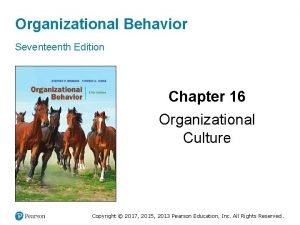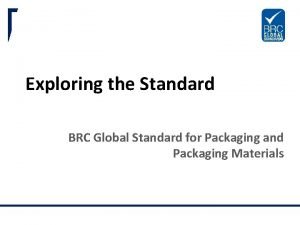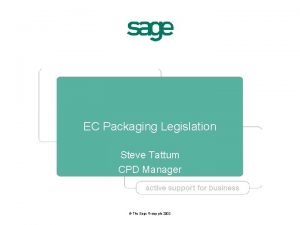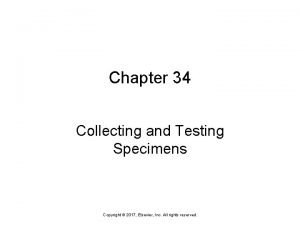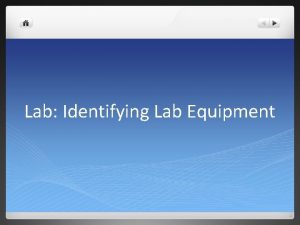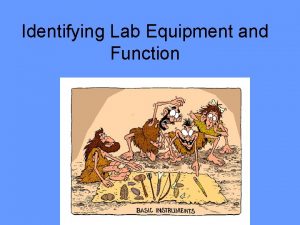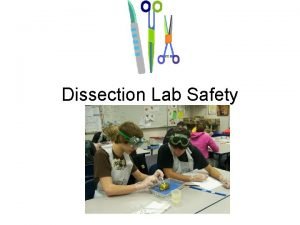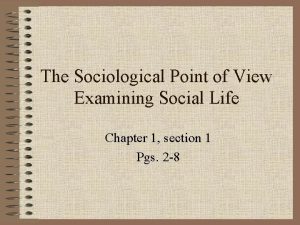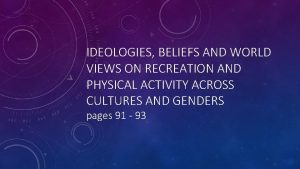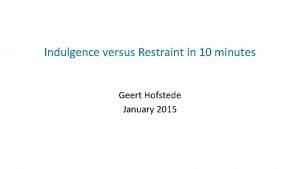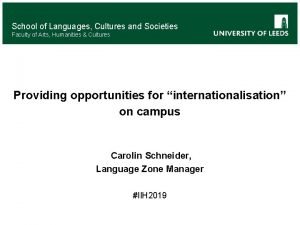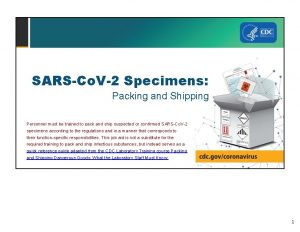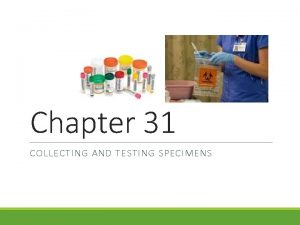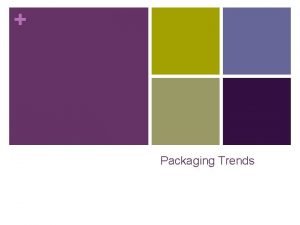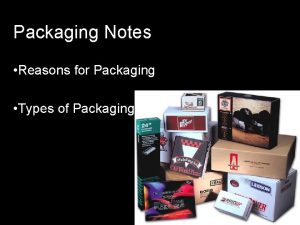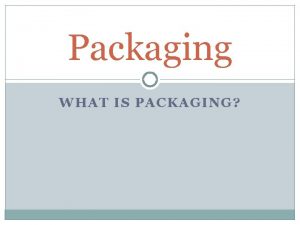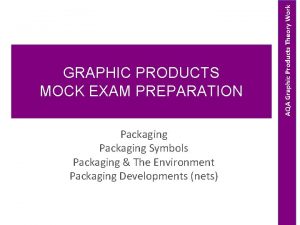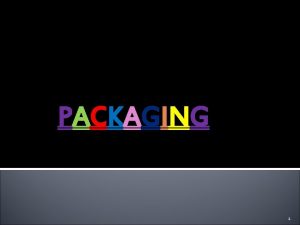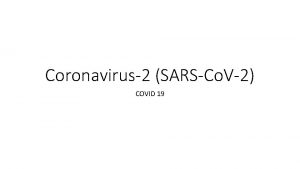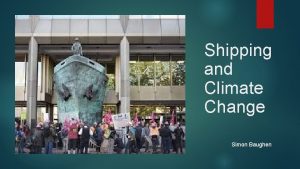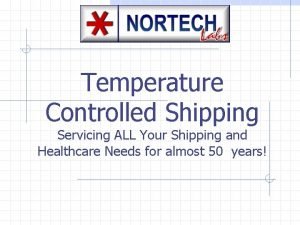Packaging and Shipping SARSCo V2 Specimens Cultures Isolates

















- Slides: 17

Packaging and Shipping SARS-Co. V-2 Specimens, Cultures, Isolates, and Waste

Classification of SARS-Co. V-2 (COVID-19) The Centers for Disease Control and Prevention (CDC) specifies in the “Interim Laboratory Biosafety Guidelines for Handling and Processing Specimens Associated with Coronavirus Disease 2019 (COVID-19)” : • Package and ship suspected or confirmed SARS-Co. V-2 patient specimens, isolates, or cultures as UN 3373 Biological Substance, Category B; – specimens should be in a sealed, decontaminated primary container • Handle laboratory waste from testing suspected or confirmed COVID-19 patient specimens as all other biohazardous waste in the laboratory. Currently, there is no evidence to suggest that this laboratory waste needs any additional packaging or disinfection procedures.

Packaging for Transportation “UN 3373 Biological Substance, Category B” Triple Packaging “system”: • Primary receptacle, sealed and decontaminated; • Secondary packaging must contain sufficient absorbent (for liquids) and cushioning material to protect the primary receptacle; • Outer packaging filled and closed in accordance with manufacturer’s instructions. 49 CFR 173. 199

Packaging for Transportation “UN 3373 Biological Substance, Category B” Liquid Specimens: • Primary receptacle and secondary packaging must be leakproof; • Multiple fragile primary receptacles must be wrapped individually or must not make contact; • Secondary packaging must contain sufficient absorbent material to absorb entire contents of primary receptacles; • Primary receptacle or secondary packaging must meet 95 k. Pa pressure differential for aircraft shipments. 49 CFR 173. 199

Packaging for Transportation “UN 3373 Biological Substance, Category B” Solid Specimens: • Primary receptacle and secondary packaging must be siftproof; • Multiple fragile primary receptacles must be wrapped individually or must not make contact; • If residual liquid is present or solid material may become liquid during transportation, material must be transported as a liquid. 49 CFR 173. 199

Hazard Communications for Transportation “UN 3373 Biological Substance, Category B” Package marked with: • UN ID Number; • Proper Shipping Name; • Name/telephone of knowledgeable person. – On package or Waybill Example: In case of Emergency: Dr. Robby Keough, (321) 555 -1212 49 CFR 173. 199

Hazard Communications for Transportation “UN 3373 Biological Substance, Category B” When outer package is placed in an overpack, such as a shippers envelope, package markings must be either clearly visible or reproduced on the outside of the overpack. Example: In case of Emergency: Dr. Robby Keough, (321) 555 -1212 49 CFR 173. 199

Training Requirements for “UN 3373 Biological Substance, Category B” • 49 CFR 173. 199(e) for training states, “Training. Each person who offers or transports a Category B infectious substance under the provisions of this section must know about the requirements of this section. ” • This includes, but is not limited to: – – – Manufacturer’s packaging instructions; Required hazards communications and markings; Solid vs. Liquid shipping requirements; Shipping with Dry Ice; Shipping via aircraft. 49 CFR 173. 199

Definition “UN 3291, Regulated Medical Waste n. o. s. , 6. 2, II” “Regulated medical waste or clinical waste or (bio) medical waste means a waste or reusable material derived from the medical treatment of an animal or human, which includes diagnosis and immunization, or from biomedical research, which includes the production and testing of biological products. Regulated medical waste or clinical waste or (bio) medical waste containing a Category A infectious substance must be classed as an infectious substance, and assigned to UN 2814 or UN 2900, as appropriate. ” 49 CFR 173. 134(a)(5)

Exceptions for “UN 3291, Regulated Medical Waste n. o. s. , 6. 2, II” A regulated medical waste transported by a private or contract carrier is excepted from— • The requirement for an “INFECTIOUS SUBSTANCE” label if the outer packaging is marked with a “BIOHAZARD” marking in accordance with 29 CFR 1910. 1030; • The specific packaging requirements of 49 CFR 173. 197, if packaged in a rigid nonbulk packaging conforming to the general packaging requirements of 49 CFR 173. 24 and 173. 24 a and packaging requirements specified in 29 CFR 1910. 1030, provided the material does not include a waste concentrated stock culture of an infectious substance. Sharps containers must be securely closed to prevent leaks or punctures. 49 CFR 173. 134(c)

Common Industry Practice for Closure “UN 3291, Regulated Medical Waste n. o. s. , 6. 2, II” Inner Packaging for solids: • No rips, tears or holes; • Minimum entrapped air; • Tied to prevent leakage; Single Knot – Do not use “overhand”/ Bunny Ears Knot – Single knot or spin, gooseneck & tape • Bags placed in outer package – Box, bin, rolling cart or large packaging Gooseneck & Tape/Zip Tie

Packaging for Transportation “UN 3291, Regulated Medical Waste n. o. s. , 6. 2, II” Outer Packaging: • Rigid Non-Bulk (≤ 119 Gallons) – When closed no leaks, residues, remains closed (49 CFR 173. 24) • Bulk (>119 Gallons) – Large Packagings and Non. Specification Bulk Packagings; – Detailed requirements are found in 49 CFR 173. 197(c)-(e)

Hazard Communication for Transportation “UN 3291, Regulated Medical Waste n. o. s. , 6. 2, II” Package Marking: UN 3291 Regulated Medical • UN ID Number; Waste n. o. s. • Proper Shipping Name; • “BIOHAZARD” marking in accordance with 29 CFR 1910. 1030; • Consignee's or consignor's name and address 49 CFR 173. 134(c)&(d) 49 CFR 172. 302 Bulk Marking (can also be on plain white placard)

Hazard Communication for Transportation “UN 3291, Regulated Medical Waste n. o. s. , 6. 2, II” • Shipping description in the correct order: – Identification Number: “UN 3291” – Proper Shipping Name: “Regulated Medical Waste n. o. s. ” – Hazard Class/Division: “ 6. 2” – Packing Group: “PGII” or “II” (Roman numeral) – Total Quantity and Unit of Measure – Number and Type of Package (Box, Cart, BOP, etc. ) – Shipper’s Certification with Signature – Emergency Response Telephone Number 49 CFR 172. 202

Emergency Information for Transportation “UN 3291, Regulated Medical Waste n. o. s. , 6. 2, II” Requirements for providing and maintaining emergency response telephone number identified in 49 CFR 172. 604: • On shipping paper - Stands out. • Emergency Telephone number: – Monitored at all times the hazardous material is in transportation. Immediate! No answering machines, No answering services or No beepers; – Person, or immediate access to person, who is knowledgeable of emergency response and incident mitigation; – Name of the person, or contract number or other unique identifier for the emergency number. Photo: Lawrence Berkeley National Lab

Training Requirements for “UN 3291, Regulated Medical Waste n. o. s. , 6. 2, II” • Federal hazmat transportation law 49 CFR, Part 172, Subpart H, requires training of all hazmat employees. Training must include: – General Awareness / Familiarization – Safety – Function Specific – Security Awareness – In-depth Security Training (If Applicable) • Anyone shipping regulated medical waste must be “trained and tested”, with training records 49 CFR 172 Subpart H - Training

Hazardous Material Info-Center 1 -800 -HMR-4922 (1 -800 -467 -4922) E-mail: infocntr@dot. gov Hours of Operation: 9 am – 5 pm ET § Obtain answers to HMR questions § Request copies of Federal Register, special permits or training materials § Report HMR violations § Fax on Demand
 Organizational cultures often reflect national culture.
Organizational cultures often reflect national culture. Liner vs tramp
Liner vs tramp What is mp&l
What is mp&l Brc global standards directory
Brc global standards directory Packaging and packaging waste directive
Packaging and packaging waste directive Chapter 34 collecting and testing specimens
Chapter 34 collecting and testing specimens Contrived experiences examples
Contrived experiences examples Pointed object used to examine specimens
Pointed object used to examine specimens Dissecting pins function
Dissecting pins function Dissection safety worksheet
Dissection safety worksheet Examining social life
Examining social life Recreational activities across cultures and genders
Recreational activities across cultures and genders Chapter 20:11 using reagent strips to test urine
Chapter 20:11 using reagent strips to test urine South korea indulgence vs restraint
South korea indulgence vs restraint Southeastern and gulf cultures
Southeastern and gulf cultures What impact did nearness to the sea have on greece
What impact did nearness to the sea have on greece Cultures and organizations software of the mind
Cultures and organizations software of the mind School of languages cultures and societies
School of languages cultures and societies
